Holiday Guides 2014: AMD Motherboards
by Ian Cutress on December 4, 2014 9:50 AM EST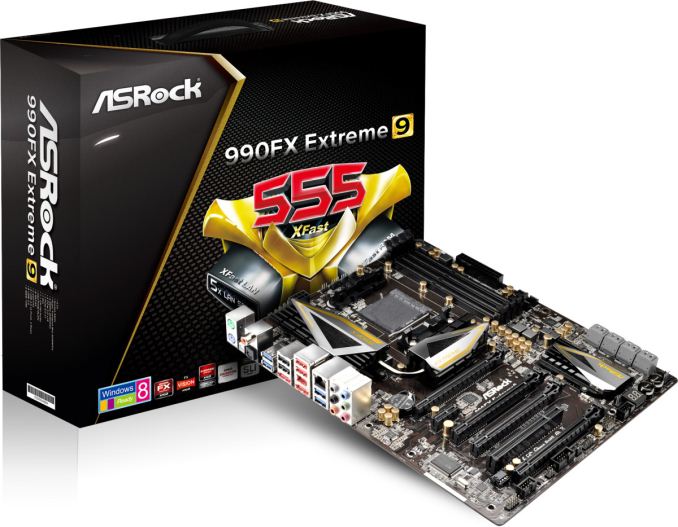
For socketed desktop systems, AMD is currently maintaining three significantly different processor lines. To add to the confusion, one is super low power (Kabini/AM1), one hasn't been updated since 2011 (AM3+), and the newest platform focuses most in integrated graphics and OpenCL rather than pure throughput (Kaveri/FM2+).
Due to this segmentation, while motherboard manufacturers have products in each market, the range ends up either quite old (AM3+) or lower cost (Kabini and Kaveri), leaving manufactures little room to differentiate. But ultimately, this is AMD's strategy: providing the lower cost systems and focusing on integrated graphics. While there is something to be said in transferring over GPU knowledge into integrated graphics, one might wonder why in terms of cannibalizing low end discrete card sales.
Nevertheless, we have reviewed each of the main chipsets on offer and can provide some recommendations. Many if these recommendations hold over from our last AMD guide.
FM2+ with A88X using Kaveri
GIGABYTE F2A88X-UP4 (Our Review, $100 - $15 Mail-In Rebate)
Starting with the Kaveri space, GIGABYTE's high-end offering is certainly notable. The A88X based UP4 gives the user PowIRStage ICs designed to be more efficient and handle higher current. This allows users to overclock their processors with potentially less power loss from the power delivery, and by overclocking you can improve the responsiveness and performance.
Aside from the power delivery and heatsinks, GIGABYTE includes the potential for three way Crossfire-X solutions, six SATA 6 Gbps ports, eight USB 3.0 ports, Realtek ALC892 audio and a Realtek NIC. For integrated graphics users, all four of the main video outputs are present, along with a power button and a two-digit debug readout. Legacy PCI users also get a slot as well.
We reviewed the GIGABYTE F2A88X-UP4 earlier this year with our other FM2+ coverage, and one of the big plus points was the 20W lower power consumption compared to some other A88X motherboards on the market. The power delivery subsystem also negated any potential for slowdowns with the early Kaveri ES SKUs. The BIOS and software at the time we reviewed it were still a bit behind, but the product overall comes in at a nice price.
ASUS A88X-Pro (Our Review, $129 - $25 MIR)
The only motherboard to receive an award from our limited FM2+ testing was the A88X-Pro from ASUS. The design was well received, the hardware was good, and the software/BIOS combination was updated to take into account AMD's APU line with this chipset combination.
One of the biggest criticisms with the board is the price, arguing that it costs +80% more than some other A88X motherboards but offers no relative increase in performance. The A88X-Pro still gave a larger overclock, more memory space, more USB 3.0 and SATA ports, a better audio codec, and a better BIOS/software platform for that extra cost, negating that argument that focuses solely on one part of the puzzle. The A88X-Pro is still a high end FM2+ model, so it's perhaps not ideal for a cheap Kaveri build, but it is one of the best FM2+ motherboards out there.
Mini-ITX
ASRock FM2A88X-ITX+ (at ASRock, $89)
Where integrated graphics are concerned, smaller form factors come into play. This is despite AMDs socket being rather large and leaving little space for the chipset/FCH and other IO. ASRock's ITX offering did things a little differently by rotating the memory slots to be inline with the rear panel, potentially benefiting airflow similar similar to a server like environment.
Due to the platform, this also afforded six SATA 6 Gbps ports ripe for RAID 5, ideal for a home storage machine without having to buy a RAID card or rely on software RAID.
FM2+ Gaming to Consider
Perhaps surprisingly, most of the FM2+ gaming motherboards were pretty late to market. Due to the low cost nature of the platform and many of the manufacturers wanting to retain their gaming ranges for the more premium crowd, it became difficult for the vendors to decide what should and should not be available. As a result we have only reviewed one of the gaming models, but currently there are several options from each of the vendors:
ASUS ROG Crossblade Ranger (at ASUS, $153)
GIGABYTE G1.Sniper A88X (at GIGABYTE, $97 - $20 MIR)
MSI A88X-G45 Gaming (Our Review, at MSI, $119 - $10 MIR)
ASRock FM2A88X Killer (at ASRock, $95)
AM3+
With the recent release of AMD's lower power 95W Vishera parts, such as the FX-8370E and the FX-8320E, along with the full consumer release of the 220W FX-9590 and FX-9370, there is another semi-resurgence of AMD focused systems of late. AMD aims for price/performance over Intel, and for a get-up-and-go system there can be something said for picking up a cheap AM3+. However, the motherboards fit into two main categories - those that can support the 220W CPUs, and those that cannot.
In general, the higher end the motherboard, the more likely 220W CPUs are supported. The best way to check would be with the motherboard manufacturer's website. Another factor to consider with AM3+ is the lack of PCIe 3.0 support. Some motherboards have additional PLX chips to enable GPU-to-GPU bandwidth in PCIe 3.0 mode, but the communication back to the CPU is still limited to PCIe 2.0.
Our big main AM3+ / 990FX review was back in April 2012, to put some perspective on how old this platform is. AM3+ motherboards cost from $25 to over $200, making any killer product completely price dependent. Since our 2012 review, we have reviewed one other 990FX board that ends up earning our recommendation:
ASRock 990FX Extreme9 for 220W CPUs (Our Review, $170)
The Extreme9 was the bedrock for all our recent re-testing of AMD's Vishera CPUs. It performed the job without issue, and as of late ASRock's BIOS and Software have been plus marks in my book.
In terms of hardware the 990FX Extreme9 has eight SATA 6 Gbps ports, eight USB 3.0 ports (via Etron controllers), support for 3-way graphics setups, and substantial enough power delivery to even overclock the 220W CPUs. Networking is provided by an Intel NIC, with audio via a Realtek ALC898.
MSI 970 Gaming for non-220W CPUs (at MSI, $99)
While we haven't reviewed this motherboard, it is being mentioned here for being a crowd favorite. MSI migrated its gaming moniker and style back to the 970 chipset and it provides an avenue for AMD based gaming builds at a much cheaper price point.
With it being based on the AMD 970+SB950 platform, we still get a full range of SATA ports however we are reduced back to one full PCIe 2.0 x16 slot and a PCIe 2.0 x4 slot, rather than an x8/x8 split. For single GPU usage with a focus on gaming, this motherboard offers an interesting data point.


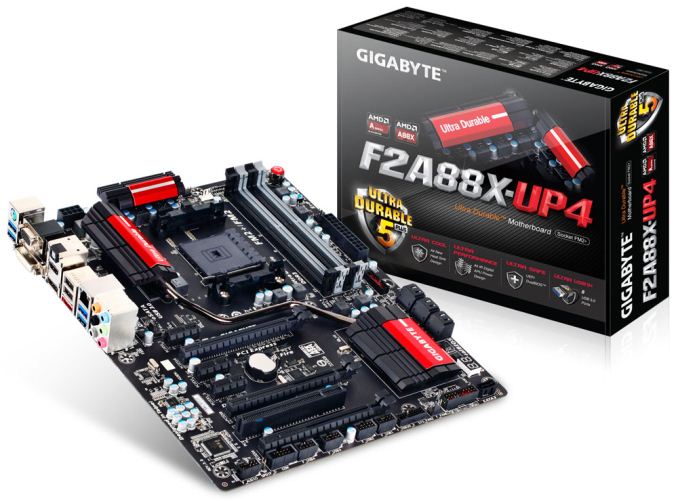






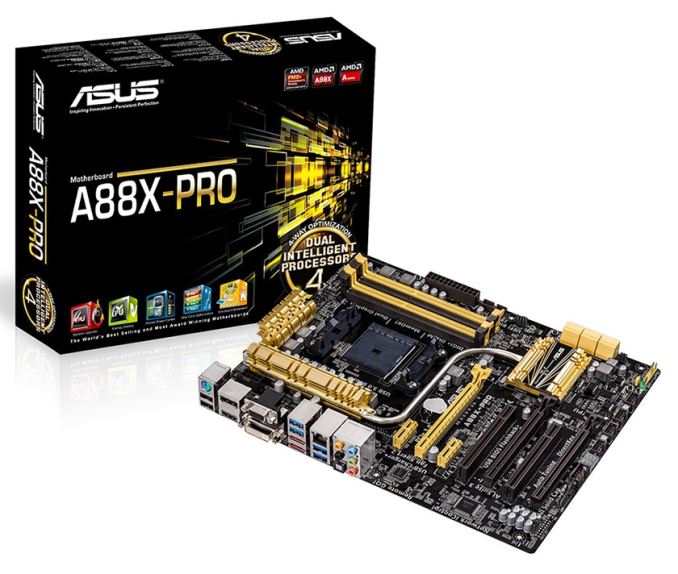




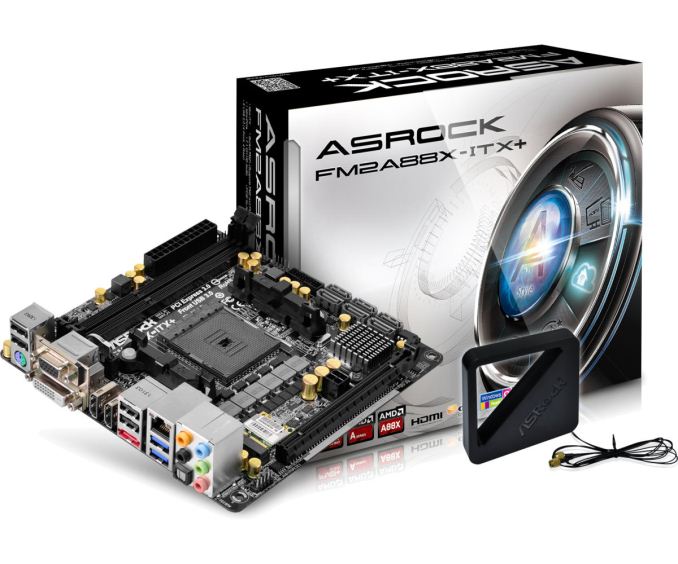
_thumb.jpg)
_thumb.jpg)
_thumb.jpg)
_thumb.jpg)
_thumb.jpg)





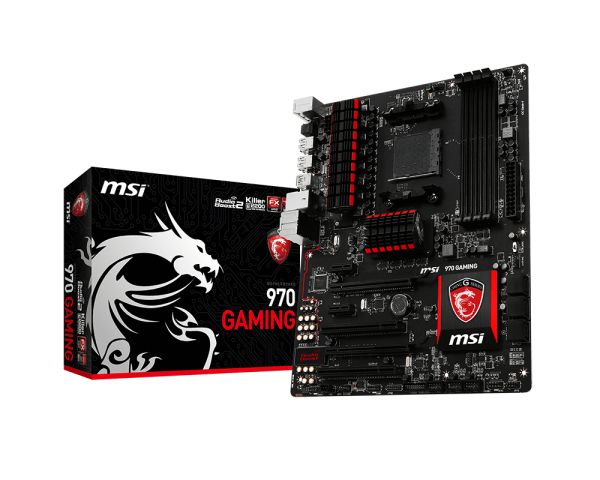













25 Comments
View All Comments
yannigr2 - Thursday, December 4, 2014 - link
There is really no reason on the AMD platform to search for a motherboard with a price higher than $100-$120. The best thing to do is to search for the best value under that $100 limit.Spending $190 for an AM3+ motherboard, no matter how good this is, it's unfortunately pointless with Piledriver cores. Spending those $100 extra on an Intel processor is more logical.
The same is true with FM2+. The fact that the highest models have only 4 cores, or to be more precise, 2 modules, negates any value that a hi end motherboard can offer.
barleyguy - Thursday, December 4, 2014 - link
I agree that spending $190 on AM3+ doesn't make a lot of sense. Boards with a 770 chipset can be had in the $40 range (the Gigabyte USB3 board for example), and won't perform significantly different. A $40 board and a $99 FX-6300 processor is a pretty good budget machine. On certain workloads like video encoding it will outperform anything I know of at the same price.Flunk - Thursday, December 4, 2014 - link
AM3+ is a dead platform, they haven't launched a genuinely new chip design since Vishera in October 2012. Kavari on FM2+ makes sense, but only for low-end systems and then only if you use the integrated graphics. The second you have a little more money or a dedicated GPU it just makes no sense.yannigr2 - Friday, December 5, 2014 - link
AM3+ does make sense if you keep the cost for the motherboard low. A 6300 or a 8320 does offer great value.On FM2+ platform, quad core cpus like 740 or 750K, do make sense. They are cheap and they offer good multithreading performance. If you are going to use a gpu like a 260X or a 750Ti or even a 270, one of the cheap FM2 quad cores is a good option.
The problem with AMD is that it doesn't push at least one platform. On AM3+ they keep old cores. No Steamroller, no Excavator. On FM2+ they still haven't replaced all their Richland/Trinity models with Kaveri. I don't know how much money they save by keeping Richland in the market, I only know that the platform and all new stuff like Trueaudio, GCN, Mantle of HSA lose because of this tactic. Also a 840 at the price of a 740 would have been a much more competitive chip against Pentium. Someone completely moron who should have been fired by now and also sued for damages has persuaded the other morons in AMD's board to keep limited Kaveri models in the market, thinking that this way they are forcing people to pay extra for Kaveri models. Well, most people either don't pay for Kaveri and don't upgrade, or they are going to Intel. Also it is completely and utterly stupid that we haven't seen Beema models on AM1.
AMD's management is like trying to sabotage the company in every way possible. I am not sure if they artificially keep the company's value low, hopping someone to come and buy them.
TiGr1982 - Friday, December 5, 2014 - link
I don't think it's happening artificially; probably, it's just they are shooting "themselves in the foot" with these attempts to "save" (continue keeping old tech for a while, already having new tech at their disposal), as you already pointed out.Personally, because of this ongoing mismanagement for years, I lost faith in anything x86-64-related from AMD long time ago and moved to i7. However, in contrast, their discrete GPUs are really good for the money. I hope, at least, they'll continue to properly develop and release new discrete GPUs in the future.
Flunk - Friday, December 5, 2014 - link
I honestly think all the old-cores are still there because those chips have already been produced and are sitting around gathering dust. AMD just isn't moving product when it comes to CPUs.AM3+ really is dead, the chips are not competitive with Intel's chips in any segment. Single-threaded, even cheap i3s beat the high-end AM3+ chips and at that point there just isn't a reason to consider them because you can get a better chip for the price. The closest they can get is competitive multi-threaded performance, and then only in integer processing and frankly everything that's extremely threaded is going to need a more powerful chip anyway. The "High End" AM3+ chips use so much power you need liquid-cooling to keep them from burning up. With a similar water-cooling rig and a i5 k-series part you can overclock it 500-1000Mhz and totally blow that AMD chip out of the water (because it's still faster even at stock).
I've run a lot of numbers and if you're talking about gaming as soon as you add any GPU into the mix the Intel option gets higher framerates. AMD's integrated GPU scores much better, but the CPU performance in games isn't good because games rely on per thread performance.
AMD hasn't really been competitive since the Athlon 64 generation (where they were ahead of Intel), since Intel implemented its tick/tock strategy they're been ahead the whole time. Frankly, steamroller is a failed design that they thought they could scale to super-high frequencies (6Ghz+) and it turns out that after a certain point it just consumes massively more power.
AMD doesn't have a chance unless they get out a better architecture, god knows if they'll even manage that. I've been hoping they're actually spending all their development money on a better CPU design while putting out all these crappy steamroller-derived chips but I'm not holding my breath.
Operandi - Friday, December 5, 2014 - link
You're right for not holding your breath, CPU development takes a long long time. Just look at how long Intel had to ride out the Pentium 4 even after it was a clear failure that could never achieve its goals. We only got Core architecture as soon as we did because Intel had parallel development of the Pentium M at the same time which is what Core was based on. That and Intel vastly has more resources so they can recover much faster than what AMD can do in their current predicament.Limited resources is also likely why we are not seeing Steamroller and on AM3+ or a whole new socket as dedicated performance CPU part or in the server. There would likely be a 5-15% performance boost but even that wouldn't put them where they need to be vs. Intel. And while they need to move parts they also have to look at the long play and that has to be a new micro architecture which they probably knew once the original Bulldozer core was tapped out. Personally I think we'll see something interesting in late 2015-16 if for no other reason Jim Keller left a very lucrative position to join back up.
Having said all that the current 8xxx AM3+ CPUs are not bad at all for the price if you can load up the cores. Great for video editing and other similar tasks and honestly plenty fast for most single threaded work. Power consumption is also a bit over blown when you think about how much time your CPU really spends under full load and the fact that the AMD parts idle quite well. The only issue is you do need a fairly massive cool to deal with that heat when the CPU is loaded but that's something most people do on Intel platforms as well.
TiGr1982 - Friday, December 5, 2014 - link
You meant, "Bulldozer-derived", I guess:Bulldozer (only in first gen FX CPU) ->
Piledriver (in Trinity APU, Richland APU and in second gen FX CPU) ->
Steamroller (only in Kaveri APU) ->
(to be released) Excavator (AFAIK, only in Carrizo APU)
But whatever the name, it doesn't change the situation, so I fully agree with you.
This "construction equipment" is all pretty slow in any single threaded code - no better than almost 6 year old 45 nm Phenom II (K10.5 core) clock per clock. Besides, these "construction machines" are very power hungry at high clocks above 4 GHz (FX-9370 & FX-9590 have formal 220W TDP). That's why a lot of people switched to Intel in recent years (myself included).
yannigr2 - Friday, December 5, 2014 - link
It's funny if not insane that AMD has seen what Pentium 4 did to Intel and 5 years latter, someone with no brain, thought that AMD could produce it's own Pentium 4 and succeed where Intel failed.I bought a Thuban the next day I saw the first Bulldozer review.
just4U - Friday, December 5, 2014 - link
Here in Canada the difference (pricing) between a the PentiumG 3258 and the 860K is 10 bucks. I actually went the Pentium route for my GF's build.. which was a mistake since she can't play DragonAge Inquisition (had to upgrade to a i5) but I built a system for a buddy with the 860K and he plays it fine. Kinda ticks me off lol..At the end of the day I don't think it really matters, Amd is very competitive with Intel in the lower tiers. Lots of options on all sides.